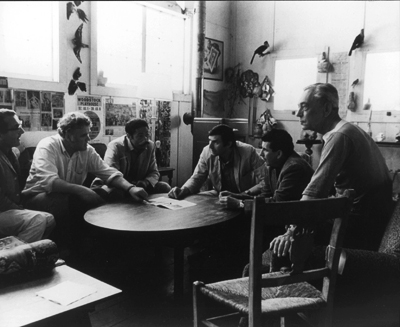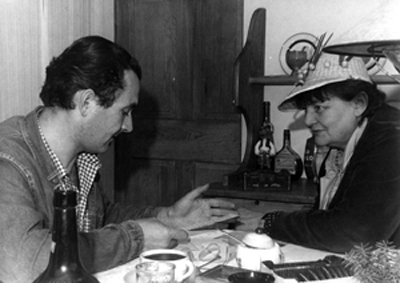
Statements by the Artist
“To me, one’s addressing oneself to the unfathomable, the unnameable, is a private act.”
“In my little life, it was the major event which changed everything” the transformation came “with the realization of the magnitude of the genocide against my people.”
“Whatever gifts I had were put to use to bear witness….”
“I want my art to reflect our human experience in the world in its totality, the beautiful as well as the atrocious, the tender and caring as well as the insensitive and murderous.”
“The celebration and affirmation of the beauty of creation must coexist not alternately but simultaneously with the tragic.”
“Artists, all those to whom we are eternally grateful for having made us see, feel and fully realize what we might otherwise have overlooked.”
“I would like those who are qualified to say, in the end ‘this’ is art.”
“The hand has lost its freedom and must obey commands from the soul.”
“But by the very fact of its being, each drawing is an affirmation of life….”
The Critics’ Views
“A masterful use of powerful design to express a deep emotional experience” NATIONAL INSTITUTE OF ARTS AND LETTERS
“Pachner is considered by many to be the finest artist in the state and perhaps the entire Southeast. He was awarded his retrospective show as the result of a nationwide competition sponsored by the Ford Foundation, only 10 artists in the country having received this honor last year. This automatically acknowledges Pachner as an artist of nationwide significance.
It was against strong odds that Pachner received this recognition. His style was out of step with the prevalent contemporary trends. The predominant style in America for over a decade has been Abstract Expressionism and its numerous variants. Emphasis was on non-figurative painting where the subject matter of art lay in pure visual experience which it provided. Pachner on the other hand, always employed figurative themes, and his paintings invariably expressed some profound idea. By this time Pachner had already acquired sufficient skill to achieve success in whatever style he chose to practice. Why, then, did he eschew abstraction when it might have been a surer road to critical acclaim?
The answer was inherent In Pachner’s decision to become a fine artist when he learned of the slaughter of his family and relatives by the Nazis.
He decided then to give up his successful career as a commercial illustrator, and to use his artistic talent to serve the most profound values of humanity. Inherent in his decision to become a fine artist was Pachner‘s knowledge that his art must have significance.
Pachner‘s first paintings were illustrative, but he soon recognized their limitations and embarked on a study of the old masters. First the Flemish fifteenth-century painter captivated him, then Rembrant and Goya. From Cezanne and Picasso he learned modern concepts of form; in Redon, Bonnard, Chagall and Rouault he saw how color could be used expressively.
Pachner’s major themes in the years that followed were the crucifixion, motherhood, and the embrace. He saw these not as specific incidents but as universal expressions of the deepest human emotions. As the interpretation of these themes grew broader, Pachner’s style became more ambiguous. Figures dissolved almost beyond recognition, with only the emotional gesture remaining.” ELIHU EDELSON (March 18, 1961)
“Voluptuous and joyous describes many of William Pachner’s landscapes but few better than untitled no. 4 1974, 70” x 70. Pachner’s art is a 100-proof distillation of love, tragedy, glory, solitude, physicality and tradition.” CHARLES BENBOW, St. Petersburg Times (February 15, 1983)
“He moves between the troubled complexities of his frequently somber landscapes and the desire to say “yes” in what might be called visceral compositions of the highest color intensities.
Mature individuality and craftsmanship make looking at painting the profound experience it ought to be…. There are no tricks of texture application, no calling upon plastic substances to build up areas. The pastel, or the oil is used in one, might say, its pristine state. The result of such painting carries terrific authority, variety and vitality…the artist portrays the microcosm, the little world, lovingly paying attention and homage, to detail. Like Goethe‘s Faust, Pachner is learning to see the universal through its small components with the result that the works contain a lyricism rarely seen.
The ‘protean’ variety of his talent keeps astounding me.
Pachner then has taken abstract expressionism into a new realm. He has worked out for himself a philosophical idiom whose basic program is human experience presented in highly suggestible shorthand, but no longer manifested by pure design and color placement.” HANS JUERGENSEN, Tampa Times
“William Pachner is like an actor…is constantly scratching the raw nerve of existence. Most of us are not actors. We can afford to ignore how small and helpless, how hurt and magnificent, we are. We build protective shields around our lives…muffles the inner cries of our consciousness. But a good actor must keep himself stripped and vulnerable to the tragedy and absurdity of life as well as to the delicate pleasures it offers.
Like an actor, William Pachner keeps that raw nerve exposed so that he doesn’t miss a single sensation. Sure it hurts. But then, he has experienced more sensations than you or I. Inevitably, this appetite comes out in his painting, which seize each passing moment, sensations it bring, and the mood that result. “Art is not art unless it is born out of a living experience.WP”
But what is the value of expressing his lived experience? Why doesn’t he copy the endless details in a REAL landscape, making art imitate the real world? The truth is that the “real” landscape is too vast and chaotic to imitate.
For Pachner, his disciplined and emotional landscapes are an effort to pull out of the chaos of his sensations a human-scaled, human-controlled testimonial to what it means to be alive. In this, he echoes the words of Martin Buber, “You yourself must begin. Existence will remain meaningless for you if you yourself do not penetrate into it with active love and if you do not in this way discover its meaning for yourself.”
JOANNE MILANI RODRIGUEZ
“…brushwork…in the grand manner, showing a knowledge of the kind of immortal art that somewhat recalls the chiaroscuro master works of Rembrandt. The muting of subject matter, which is not totally submerged as in many pieces, is fraught with feeling, making the spectator wonder and want to know more instead of turning away in puzzlement or disgust.” LAWRENCE DAME
“Pachner had a firm determination to keep alive the consciousness of the brutality and inhumanity existing in our time and to plead for humanistic values. To accomplish these objectives he had to work out over the years in his own means of visual and intellectual communication.
Early dependence on subject matter alone through his increasing consciousness of the expressive qualities of form and color, rejecting his early style, years of experimentation and the beginning of his mature style.” KENNETH DONAHUE
“There are discernible images of bones, torn and rotted flesh, the flames of the crematorium and other horrible symbols that the Nazis made familiar to the world. But these are not expressions of sheer horror, calculated to shock and astonish the viewer, these paintings are the work of an artist who uses these symbols to achieve a visual experience and a spiritual message that transcends any mere display of horror. The flames of the crematorium become shimmering vehicles for the conveyance of spirit….
Pachner touches the dignity that is innate in the torn bodies of his countrymen…his technique is bold, nervous and exciting, but he has discipline, perception for the entity of his paintings and tremendous sensitivity to their visual elements. His use of color is varied and exciting and is bonded to the construction of his forms.” W.C. BURNETT (March, 1961)
Some works appear to be of fruit, landscapes, figures in landscapes, etc. but those strange overtones that we also observe have meaning. And that is that life is only an iota of a moment away from corruption and that we must awaken our awareness.” W.C. BURNETT ( 1963)
“The paint contains the warmth of the sun as only the earth can absorb and retain it…this same paint is full of wonderful, almost inaudible sounds of the warm earth….
How can so much turmoil and emotional stress and strain be contained on a two-dimensional surface with such well-defined limits? I recall the poetry of Robinson Jeffers where chaos is controlled and made positive in the process of becoming poetry.” WALLACE F. GREEN
“His employment of these shapes is intended to do more than represent thus-and-such pieces of anatomy. Somehow, I feel, he is trying to get across an idea of life-world-death-spiritual life, and he struggles mightily to do it…the artist has an enormous vitality.” CLYDE BURNETT
He is…a completeness of self knowledge, self-awareness and self-acceptance combined with a high voltage consciousness of everything around him. Because of this, he is a master artist, a challenge and a threat to “wind sniffing” painters. And inevitably, he is a master teacher who emanates a security which becomes an aura nourishing his students.”
William Pachner’s paintings are “fluid and intensely saturated hues… controlled manipulation of spatial illusions of depth contrasting with veiled shadows... billowing fragments of fleshy forms or ...particular striated ‘landscapes.’ ” CHARLES BENBOW
“The scintillating color and mastery of form so common to Pachner’s paintings have vanished from his recent creations. He now works in partial darkness 12 hours a day each day in his studio, painting quickly and intuitively, producing bleak, monochromatic gestures against stark white background. The result is shocking.
The Museum of Fine Arts in St. Petersburg has assembled an important exhibit of Pachner‘s paintings done over a 20 year period. An awesome expressionistic statement, ‘Pachner Landscapes’ is a personal vision of compassion and a reflection on the human spirit.
Pachner may be one of the country‘s most important expressionists, whose past work included riveting use of color and free sensuality in what he believes all art should be—a metaphor for a human presence.
Pachner wrestles with tragedies that constantly test his courage as an artist and as a man.”
KURT LOFT
“I don’t believe that any living American artist does show more seriousness of purpose in combination with dedication, emotional drive, native talent, technical resources and intellectual direction than William Pachner. Others may produce work which is more readily assimilated than his, but I believe that his unique communications may have a telling effect culturally which is beyond present measurement.” CLYDE BURNETT, Sarasota Herald Tribune
“Pachner demonstrates a fantastically fertile inventiveness of configurations which grip the viewer and challenge him to probe their mysteries. If we look for meaning in Pachner’s work, we must realize that it will never be simple and obvious. We may be more certain that it will be ambiguous and obscure. As we have seen, both forms and colors can have more than one meaning at the same time and even if any given painting may elude our ability to “read” it, we are still given the unmistakable feeling that the work has authority—an authority achieved through the integrity, commitment, and intensity which the artist is able to convey in the finished work.” ELIHU EDELSON, Sarasota Citizen
“Those who are moved, feel a special bond with the artist as he touches a secret chord otherwise seldom reached. It seems to me that his ability to communicate with many different kinds of people bespeaks Pachner’s unique perceptiveness. He paints what he thinks and feels about nature and man’s place in it. For those who are on the same wave-length he uncovers things for which there are no words.”
EGBERT JACOBSON, art director, painter, designer, writer
As a child, he begged his grandfather to take him to the local railroad yard...early on, he began drawing tracks and magnificent steam locomotives that billowed black smoke. There is irony here becuse in his youth, Pachner understood that railroads were to bring people together or to travel to inaccessible places, there by exposing all to other cultures. These same railroads became arteries of death, having brought millions of people to killing sites and concentration camps.
STEPHEN C. FEINSTEIN
“But the truly alive colors of a great colorist come out of the canvas, occupying the real world of our experiences and memories, yet transforming familiar time and space in to something else….
The trucks and trains…ride some terrible incline of destruction from a perspective that at once grinds us under their huge wheels an sucks us after them, into a crowded black vacuum of oblivion.
Still, if that were all it would be enough, an indictment, by participation in the entirely man-made industrial apparatus of evil….It is not all, though. What gives man-made evil its special power is its obscenity. And what gives obscenity its special power if not its appeal…Unmentioned aspect of the power of evil. The ugly is also—what? Irresistible? For there is a glamour to these hideous objects as the roar and clatter, killing us not once but over and over and over….” KELLY REYNOLDS, Organica (1990)
“Pachner correctly sensed that the free practice of art was the ultimate act of defiance against Hitlerism.” KENNETH DONAHUE
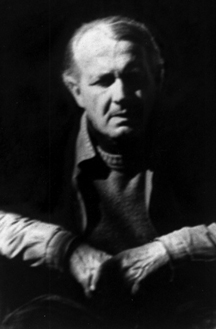
3.jpg)
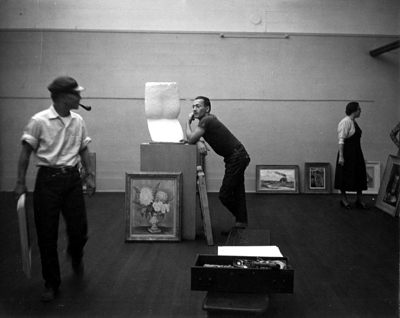
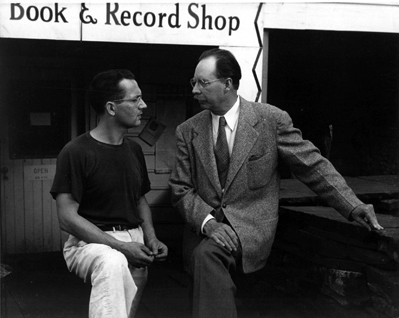
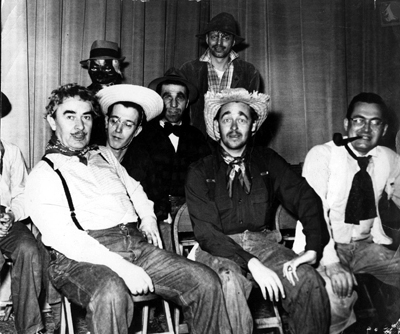
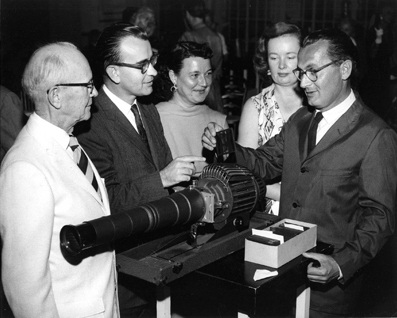
Mrs. Daisy Donahue, Mrs. Lorraine Pachner and William Pachner
